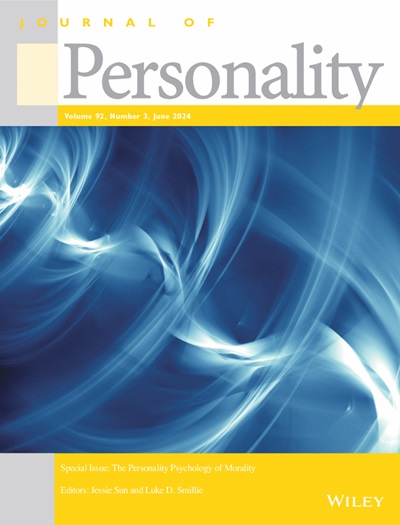Attentional Dynamics During Emotional Face Processing Differentiate Alexithymia From Mood and Affective Symptoms.
IF 2.7
1区 心理学
Q1 Psychology
引用次数: 0
Abstract
INTRODUCTION Alexithymia refers to difficulties in experiencing and expressing emotions, differentiating them from bodily sensations, restricted imagination, and externally oriented thinking. Mood and affective symptoms are often confounded with alexithymia due to the typical assessment through self-report. Performance measures may allow a more objective assessment of alexithymia. The goal of this study was to identify unique or shared performance-based features during emotional face processing. METHODS A total of 171 students provided data on alexithymia (BVAQ) and mood/affective symptoms (DASS-21), along with performance and eye movements during an emotional face processing task. LASSO regressions isolated features associated with alexithymia or mood/affective symptoms. RESULTS Cognitive alexithymia in the BVAQ was linked to delayed attentional disengagement from facial eye regions, increased face fixations/visual search, and accurate but slower responses. Mood/affective symptoms showed a pervasive link to faster but less accurate responses, accompanied by decreased facial fixations and visual search. CONCLUSION Performance-based attentional dynamics during emotional face processing clearly distinguished (cognitive) alexithymia from mood and may aid in a multi-method assessment of alexithymia. Metrics such as these may better reflect behavioral dispositions and can be used as possible transdiagnostic markers of psychopathology.情绪面孔加工过程中的注意动力学可区分述情障碍与情绪和情感症状。
述情障碍是指在体验和表达情感、将情感与身体感觉区分开来、想象力受限和外向型思维方面存在困难。由于典型的自我报告评估,情绪和情感症状常与述情障碍相混淆。表现测量可以对述情障碍进行更客观的评估。这项研究的目的是确定在情绪面部处理过程中独特的或共同的基于表现的特征。方法共171名学生提供述情障碍(BVAQ)和情绪/情感症状(DASS-21)的数据,以及在情绪面部处理任务中的表现和眼球运动。LASSO回归分离了与述情障碍或情绪/情感症状相关的特征。结果BVAQ的认知述情障碍与面部眼睛区域的注意力脱离延迟、面部注视/视觉搜索增加以及准确但较慢的反应有关。情绪/情感症状普遍与更快但更不准确的反应有关,伴随着面部注视和视觉搜索的减少。结论情绪性面孔加工过程中基于行为的注意动力学可以明显区分(认知)述情障碍和心境障碍,并有助于述情障碍的多方法评估。诸如此类的指标可以更好地反映行为倾向,并可以用作精神病理学的可能的跨诊断标记。
本文章由计算机程序翻译,如有差异,请以英文原文为准。
求助全文
约1分钟内获得全文
求助全文
来源期刊

Journal of Personality
PSYCHOLOGY, SOCIAL-
CiteScore
9.60
自引率
6.00%
发文量
100
期刊介绍:
Journal of Personality publishes scientific investigations in the field of personality. It focuses particularly on personality and behavior dynamics, personality development, and individual differences in the cognitive, affective, and interpersonal domains. The journal reflects and stimulates interest in the growth of new theoretical and methodological approaches in personality psychology.
 求助内容:
求助内容: 应助结果提醒方式:
应助结果提醒方式:


